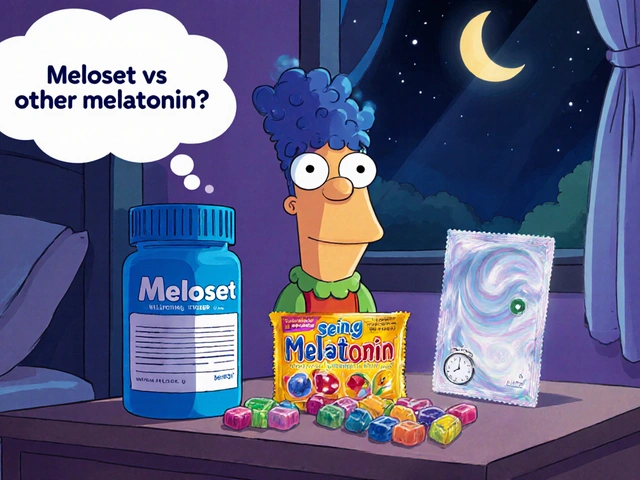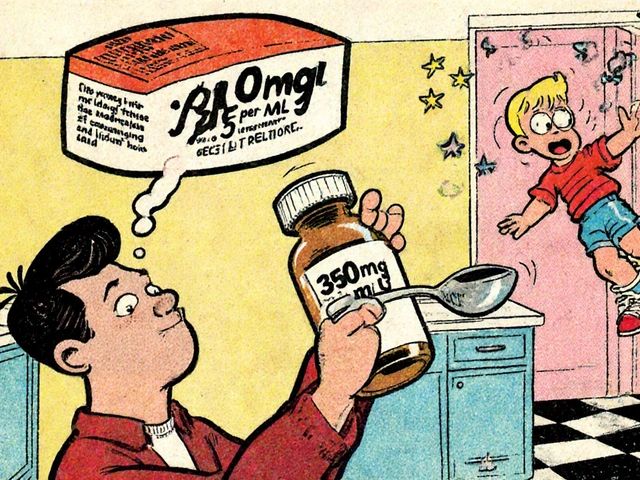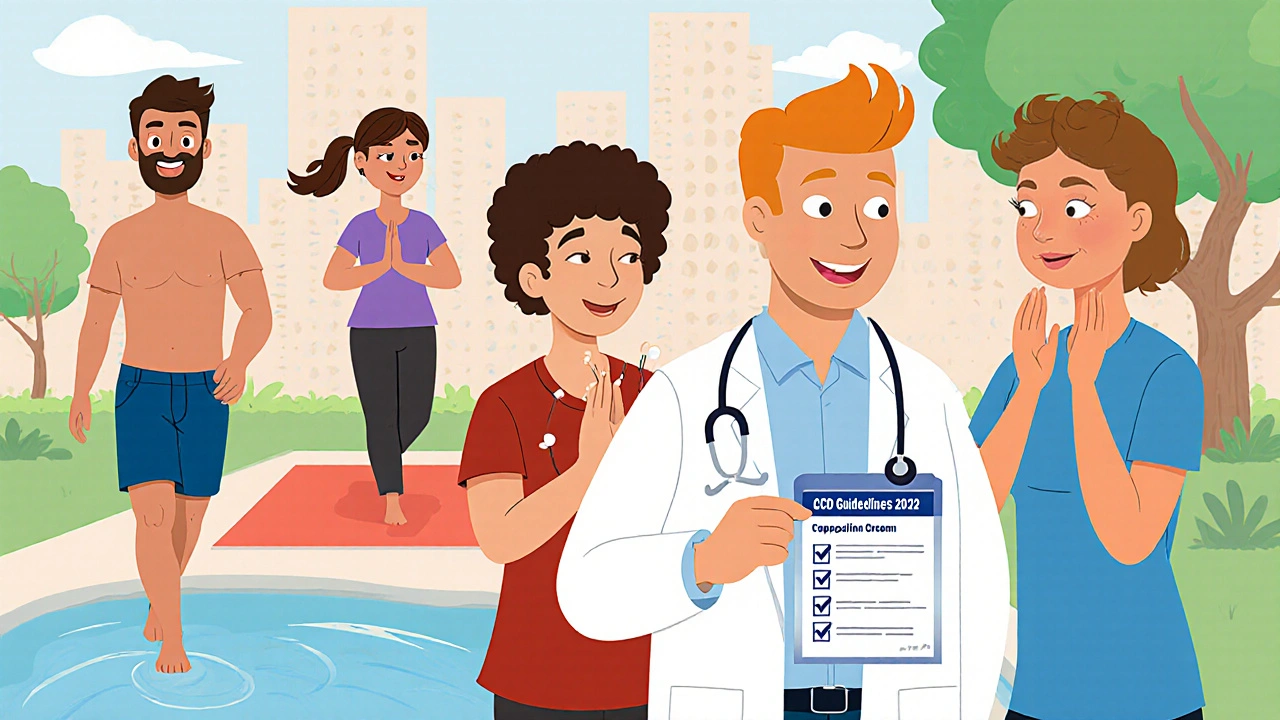
Non-Opioid Pain Management Selector
Choose Your Pain Condition
Health Considerations
Important: Always discuss treatment options with your healthcare provider before starting any new pain management plan.
For millions of people living with chronic pain, opioids used to be the go-to solution. But today, the landscape has changed. Opioids don’t work well for long-term pain, and the risks - addiction, overdose, severe side effects - are too high. The CDC updated its guidelines in 2022 to make one thing clear: non-opioid pain management should come first. And the evidence shows it works.
Why Non-Opioid Options Are the New Standard
In 2021, over 16,700 people in the U.S. died from prescription opioid overdoses. That number isn’t just a statistic - it’s a wake-up call. The CDC, FDA, and major medical groups now agree: opioids are not the answer for most chronic pain conditions like back pain, osteoarthritis, or fibromyalgia. Studies show they offer little benefit after three months, while the dangers keep growing. The 2022 CDC Clinical Practice Guideline says it plainly: nonpharmacologic therapy and nonopioid pharmacologic therapy are preferred. That means before you even consider an opioid, you should try safer, proven alternatives. And they’re not just safer - they often work just as well. A 2022 study in JAMA Network Open followed patients with chronic back or joint pain for a year. Those on non-opioid treatments reported the same level of pain relief and improved function as those on opioids - but with nearly 40% fewer side effects. That’s not a small difference. It’s life-changing.Non-Drug Therapies That Actually Help
You don’t need a pill to manage pain. Some of the most effective tools are movement, mindset, and hands-on care.- Exercise therapy - Whether it’s walking, swimming, or strength training, regular movement reduces pain and stiffness. The CDC recommends at least 2-3 sessions per week for 6-8 weeks. People with knee osteoarthritis who did water-based exercise saw pain drop by 40% in 12 weeks.
- Physical therapy - A licensed therapist designs a plan tailored to your body. For lower back pain, a typical course lasts 6-12 weeks, starting with 2-3 visits a week and tapering off. Insurance often covers it - Medicare pays 80% after your deductible.
- Cognitive Behavioral Therapy (CBT) - This isn’t just "talking." CBT teaches you how your thoughts affect pain. Studies show it reduces pain intensity by 30-50% in 30-40% of patients with chronic pain. It usually takes 8-12 weekly sessions to see results.
- Acupuncture - Thousands of patients report real relief. On Mayo Clinic’s patient forum, 52% of respondents said acupuncture helped their pain. It’s especially useful for neck pain, headaches, and osteoarthritis.
- Mindfulness and yoga - Daily practice of 20-45 minutes for 6-8 weeks can rewire how your brain processes pain. The University of Massachusetts Medical School’s Mindfulness-Based Stress Reduction program has helped people reduce pain medication use by up to 50%.
- Massage and spinal manipulation - For muscle tension and joint pain, these manual therapies offer quick relief. They’re not cures, but they’re powerful tools when used regularly.
Medications That Work Without Opioids
Sometimes, you need something stronger than movement. That’s where non-opioid medications come in. They’re not perfect, but they’re far safer than opioids for long-term use.- NSAIDs (ibuprofen, naproxen) - These are the most common over-the-counter pain relievers. They work well for arthritis, sprains, and inflammation. But they’re not for everyone. Long-term use can hurt your stomach, kidneys, or heart. The maximum daily dose for acetaminophen is 3,000-4,000 mg - go over that, and you risk liver damage.
- Topical treatments - Capsaicin cream (from chili peppers) and lidocaine patches deliver pain relief right where it hurts, with almost no systemic side effects. Great for localized pain like knee arthritis or post-shingles nerve pain.
- Antidepressants (duloxetine, amitriptyline) - Yes, these help with pain, even if you’re not depressed. They target nerve pain pathways. Duloxetine reduces chronic musculoskeletal pain by 30-50% in about one-third of users. It takes 4-6 weeks to kick in, so patience is key.
- Anticonvulsants (gabapentin, pregabalin) - Originally for seizures, these calm overactive nerves. They’re first-line for diabetic neuropathy and sciatica. But side effects are common: drowsiness (62% of users), dizziness, and weight gain (38%).
- Suzetrigine (Journavx) - Approved by the FDA in October 2023, this is the first new non-opioid painkiller in over 20 years. It works by blocking sodium channels in nerves - a completely different mechanism than opioids. It’s for moderate to severe acute pain, like after surgery or injury. No addiction risk. No respiratory depression. A real breakthrough.
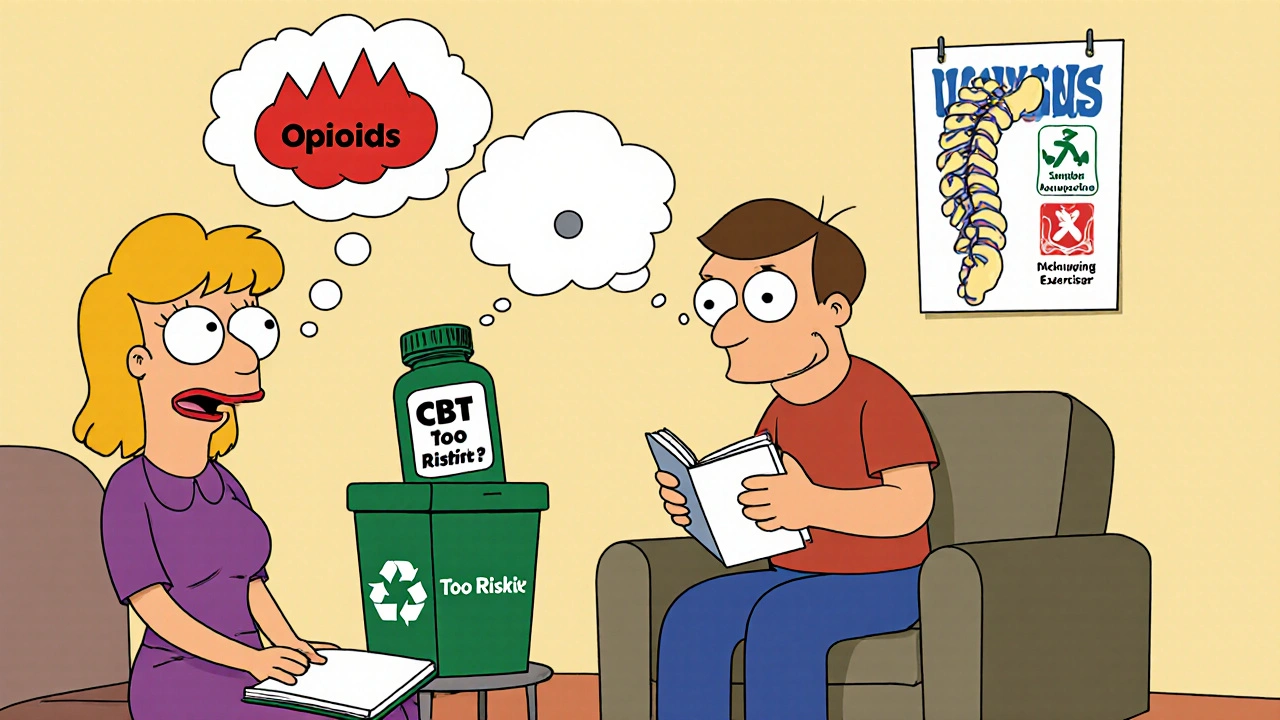
What Doesn’t Work - And Why
Not every alternative is right for everyone. Some have limits you need to know. NSAIDs are a no-go if you have kidney disease - which affects 15% of adults over 65. Gabapentin can make you feel foggy, which is risky if you drive or operate machinery. CBT requires commitment - if you skip sessions, you won’t see results. Physical therapy only works if you do the exercises at home. And here’s the hard truth: access is still a problem. A 2023 study found that 58% of rural U.S. counties have no physical therapist. In many places, acupuncture and psychological services are hard to find - or not covered by insurance. A 2022 survey by the U.S. Pain Foundation showed 42% of patients hit insurance walls. Many plans limit physical therapy to 15-20 visits a year. Acupuncture often needs pre-approval. That’s not care - it’s a barrier.Real People, Real Results
Online communities are full of stories. On Reddit’s r/ChronicPain, one user shared how a mix of aquatic therapy, CBT, and low-dose naltrexone turned their fibromyalgia around. Another on Mayo Clinic’s forum said physical therapy gave them back their ability to walk without pain for the first time in years. But it’s not all smooth sailing. On Drugs.com, 45% of NSAID users report stomach issues. Nearly two-thirds of pregabalin users say drowsiness ruined their day. These aren’t side effects you can ignore. That’s why working with a provider to find the right combo matters.How to Get Started
You don’t need to do everything at once. Start small.- Talk to your doctor - Ask: "What non-opioid options do you recommend for my condition?" Bring up the CDC guidelines if needed.
- Try one movement-based therapy - Sign up for a gentle yoga class or start walking 20 minutes a day. Track your pain levels before and after.
- Consider a topical - Try a capsaicin cream for localized pain. It’s cheap, safe, and often covered by insurance.
- Look into CBT - Many therapists offer online sessions. Some apps like Woebot or MindDoc guide you through CBT exercises.
- Check your insurance - Call your provider. Ask what’s covered: physical therapy, acupuncture, mental health visits. Know your limits.
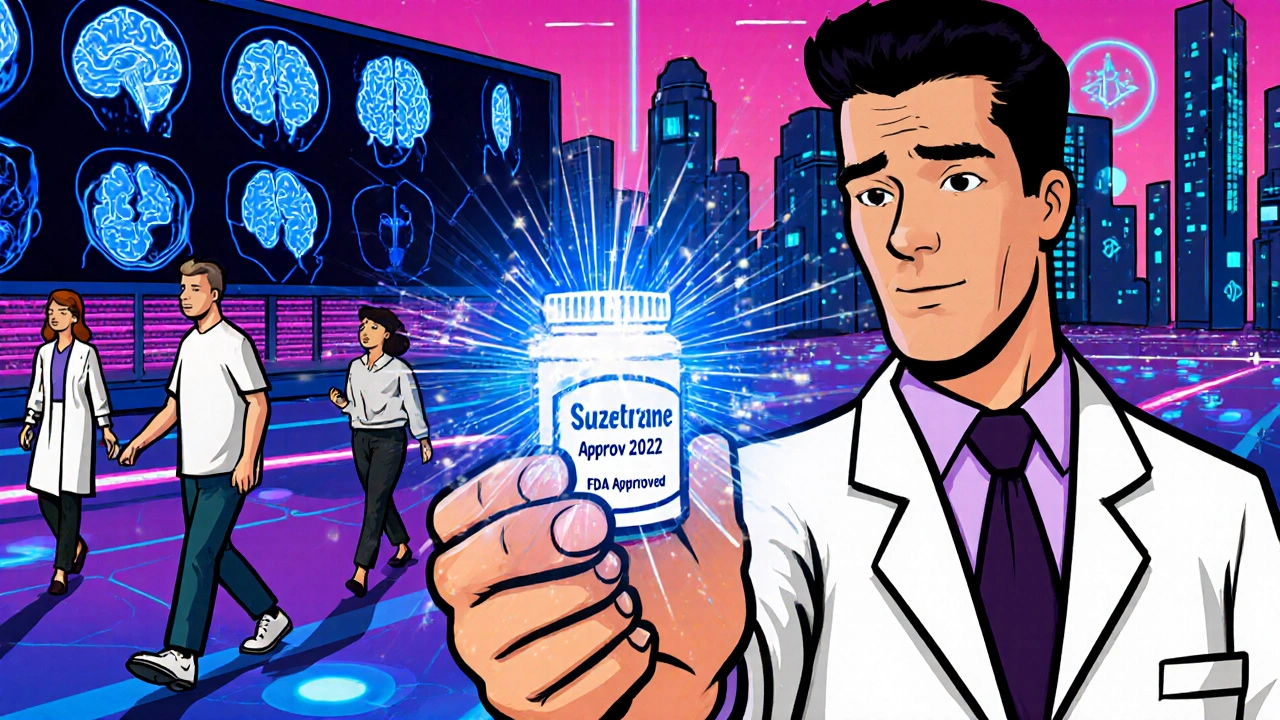
The Future Is Here
The non-opioid pain market is growing fast - from $35.7 billion in 2022 to an expected $58.3 billion by 2030. Why? Because science is catching up. The NIH has invested over $1.3 billion into developing non-addictive pain treatments. Right now, 47 new drugs are in clinical trials. One day soon, we may have blood tests or brain scans to tell us exactly which treatment will work for your type of pain. For now, the tools we have are powerful. They’re not magic, but they’re real. And they’re safer than opioids by every measure.Frequently Asked Questions
Can non-opioid treatments really work as well as opioids for chronic pain?
Yes - for most chronic pain conditions like osteoarthritis, back pain, and fibromyalgia. A 2022 JAMA study found patients on non-opioid treatments had the same level of pain relief and improved function as those on opioids, but with far fewer side effects. Opioids don’t work well long-term, and the risks outweigh the benefits for most people.
What’s the safest over-the-counter pain reliever?
For most people, acetaminophen (Tylenol) is safer than NSAIDs like ibuprofen - if you don’t exceed 3,000-4,000 mg per day. But if you have liver disease, NSAIDs may be better - as long as you don’t have kidney or heart issues. Topical creams like capsaicin or lidocaine are the safest of all, with almost no systemic side effects.
Is acupuncture worth trying for pain?
Yes, especially for neck pain, headaches, and knee osteoarthritis. Studies show it reduces pain intensity by 30-50% in many patients. On patient forums, over half of users report meaningful relief. It’s low-risk and often covered by insurance if you have a licensed practitioner.
How long does it take for non-opioid treatments to work?
It varies. Topical creams and NSAIDs work in hours. Physical therapy and exercise show results in 4-8 weeks. Antidepressants like duloxetine take 4-6 weeks. Mindfulness and CBT require daily practice for 6-8 weeks to build skills. Patience is part of the process - but the results last longer than opioids ever did.
Why aren’t non-opioid treatments more widely available?
Insurance coverage is the biggest barrier. Many plans limit physical therapy to 15-20 visits a year and require prior authorization for acupuncture or mental health services. Rural areas often lack specialists - 58% of rural U.S. counties have no physical therapist. Cost and access, not lack of evidence, are the real problems.
What’s new in non-opioid pain relief?
The biggest development is suzetrigine (Journavx), approved by the FDA in October 2023. It’s the first new non-opioid analgesic in over 20 years, designed for moderate to severe acute pain with no addiction risk. The NIH is funding 47 other new compounds in clinical trials, and researchers are working on biomarker tests to match patients with the best treatment - a major step toward personalized pain care.

